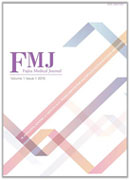8 巻, 4 号
選択された号の論文の6件中1~6を表示しています
- |<
- <
- 1
- >
- >|
Original Article
-
原稿種別: Original Article
2022 年 8 巻 4 号 p. 103-107
発行日: 2022年
公開日: 2022/11/01
[早期公開] 公開日: 2022/01/25PDF形式でダウンロード (133K) HTML形式で全画面表示 -
原稿種別: Original Article
2022 年 8 巻 4 号 p. 108-113
発行日: 2022年
公開日: 2022/11/01
[早期公開] 公開日: 2022/01/25PDF形式でダウンロード (391K) HTML形式で全画面表示 -
原稿種別: Original Article
2022 年 8 巻 4 号 p. 114-120
発行日: 2022年
公開日: 2022/11/01
[早期公開] 公開日: 2022/01/25PDF形式でダウンロード (358K) HTML形式で全画面表示 -
原稿種別: Original Article
2022 年 8 巻 4 号 p. 121-126
発行日: 2022年
公開日: 2022/11/01
[早期公開] 公開日: 2022/01/25PDF形式でダウンロード (280K) HTML形式で全画面表示 -
原稿種別: Original Article
2022 年 8 巻 4 号 p. 127-133
発行日: 2022年
公開日: 2022/11/01
[早期公開] 公開日: 2022/01/25PDF形式でダウンロード (259K) HTML形式で全画面表示
Case Report
-
原稿種別: Case report
2022 年 8 巻 4 号 p. 134-138
発行日: 2022年
公開日: 2022/11/01
[早期公開] 公開日: 2022/01/25PDF形式でダウンロード (410K) HTML形式で全画面表示
- |<
- <
- 1
- >
- >|
